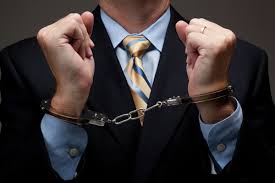Why do “white-collar criminals” get lighter sentences?
Insider trading, credit card fraud, identity theft, wonky financial advise, price fixing, bid rigging, market manipulation, and asset misappropriation, you name it there is a myriad of white-collar crimes that criminals use to embezzle funds from organisations or use to trick you out of your hard earned money.
Whether it is sharing confidential information to make bets on the public market (insider trading) or companies colluding together to price fix and manipulate the market; white-collar crime is big business.
Business Think by UNSW says “the Australian Institute of Criminology [estimates] the cost of fraud in Australia is $8.5 billion annually, [with] 50% of Australian businesses experiencing economic crime.”
According to the Australian Payments Clearing Commission there was $387 million in credit card fraud in 2014, which is approximately a $125 million increase from the Australian Crime Commission’s report of fraudulent credit card transactions that reportedly valued $262 million in 2010/2012.
With today’s access to vast amounts of data, there is too great a degree of temptation when it comes to white-collar crimes. It’s too easy for an identity thief to go beside someone with a credit card scanner or for a cartel of offenders to “figure out a weakness in a control system in an organisation and exploit it,” as Clinton Free, a professor in the school of accounting at UNSW Business School points out.
However, even though white collar crimes may be considered as serious a crime as murder, assault offences, drug offences etc. a paper in the Journal of Criminal Justice (Vol. 35) shows that people generally feel that people charged with white-collar crimes “should” have the same penalty as street crimes, but do not believe they “would” receive the same penalty.
Who are the victims of white-collar crimes?
The wide spread belief is that white-collar crimes generally effect corporations and the financial sector. Nothing that the average working class Joe has much to worry about. However, white collar crime is not a victimless crime. Although there is no crying mother who has lost her son to a person who has committed a drink driving offence, or a wife who has to pick up the pieces after her husband has been jailed after a Saturday evening causing grievous bodily harm on another. Often white collar crimes are done in collusion with others in an organisation, and sometimes these groups are brought together by charismatic managers who say that it is just a temporary fudging of the numbers to benefit the organisation as a whole.
When it is the organisation that benefits from the number tampering, people within the organisation do not perceive it as an act of fraud because it is believed to be a temporary data manipulation to weather out a bit of financial slump.
What are the effects of “White Collar Crime” on the Community?
White-collar crimes affect all of us. They inflate the price of goods and services as businesses try to recoup their losses or pay for fraud prevention. They also force banks to increase interest rates. All of these costs trickle down to the consumer with white-collar crime costing the Australian economy millions of dollars.
John Braithwaite also points out that “fraud kills [and] in Australia we have been woefully neglectful of frauds that put lives at risk” such as in areas of “occupational health and safety and consumer protection.”
If white-collar crimes have such a huge economic impact, why do white-collar criminals get lighter sentences?
The problem with white-collar crimes is that the rewards are too great and often outweigh the light penalties associated with them. For example: according to the Australian Securities and Investments Commission (ASIC) the current “maximum civil penalty for crimes like insider trading and market manipulation in Australia is around $200,000.” In comparison the “equivalent penalty in Canada is around $1 million, and in the United States the penalty is three times the profit gained or loss avoided.”
In the case of ex-Gunns boss John Gay who made almost $1 million in insider trading, he was fined $50,000, only a fraction of the amount he gained. What our sentencing courts need is to inflict punishment that is significant enough that it acts as a deterrent. Instead of “slap on the wrist”.
A study by Victor Lei and Ian Ramsay highlighted fraud offences to that of other crimes within the corporation’s legislation, The Corporations Act does impose a severe penalty for insider trading. “The maximum penalty for an individual (compared to a company) is imprisonment for up to 10 years or fines – up to the greater of A$765,000 or three times the benefits obtained.”
However, the above study also showed that 58% of insider-trading cases did not have to pay a fine and 55% of those charged did not have to pay back the profits either.
White-collar crimes are not perpetrated by your average street hustler. People who engage in this type of criminal behaviour are very sophisticated and have a lot of money in which to support their illegal endeavour. They feel they are above the law and too smart to get caught. They are usually also well connected. It also does not help when it is too hard and too expensive to put controls in place.
As Business Think by UNSW states: “our big fraud fighting bodies – the Australian Federal Police and the Australian Securities and Investments Commission – are stretched and everyone’s favourite whipping boys.”
Two different systems of justice?…seems that way.







